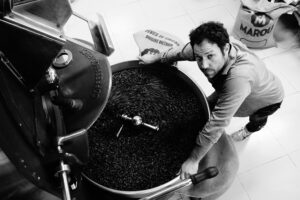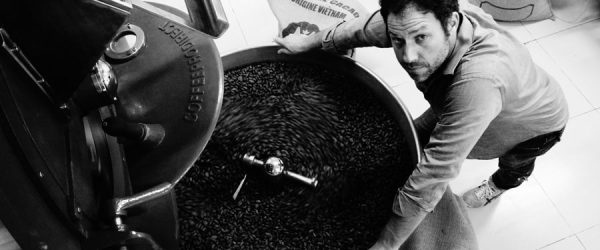 We developed a complete line of commercial cocoa roasters based on our Craft Master Series of commercial roasters.
We developed a complete line of commercial cocoa roasters based on our Craft Master Series of commercial roasters.
It goes without saying that all our machines have been tested with cocoa and are carefully designed to meet the requirements of artisanal roasters.
Together with MAROU CHOCOLATE we are working on the continuous development of our cocoa roasting machines, turning them into a series that achieves excellence, without any compromises.
Cocoa Roasting Machine modifications include:
- Increased hopper size (due to increased cocoa bean size)
- Adjusted blades and drum structure (for more even roasting)
- Inverter to set drum speed (to give you more options and control)
Although the process of roasting cocoa and coffee is entirely different on a chemical level, both roasting processes have similarities in which 1. Heat is being transferred to the bean 2. Steady airflow through the drum is required and 3. Cooling takes place. This makes coffee roasting machines a perfect match and it is a common approach to any cocoa roaster to look for machinery within the coffee industry.
For instance, cocoa is roasted at about half the temperature (100-120 degrees Celsius) and for about twice the time (25-35 minutes). Due to this more gentle process, it doesn’t have the extreme endothermic and exothermic processes such as coffee. Cocoa also contains an outer shell that preserves the shape of the bean and which needs to be removed after roasting. The bean is very brittle and it is important to produce as little broken beans as possible to make further processing efficient and delicate. During roasting, thick smoke doesn’t emit from cocoa as it does with coffee because the bean develops at much lower temperatures, resembling more of a baking process.
As a rule of thumb, the roasting capacity of cocoa beans per drum is about 10-20% higher than that of coffee. This means that when you select your cocoa roaster machine, you can add up to 10-20% to the capacity indicated. The reason being the lower temperature and overall roasting style. Coffee is simply more vulnerable than cocoa and therefore a larger amount of space is void so that all beans are constantly rotating at the higher temperatures, avoiding inconsistent roasts.
As with coffee, radiant and convective heat is beneficial to the bean, resulting in a far more consistent roast through the beans spectrum. Ultimately, this leads to a more refined taste. Our roasters have a wide spectrum of radiant and convective heat for best results. Furthermore, cocoa roasting produces more dust and particularly chaff, all which is properly separated by our roasting machines.
We hope that our work will be beneficial to the cocoa industry and that we can keep an open exchange on know how and information. Origin countries that produce coffee often also produce cocoa. Usually the industries are entirely separated from one another and do not interact much. More upstream in the market however, cocoa and coffee share the same level of indulgence, an experience of the senses we as consumers don’t want to miss and that goes so well together. A cup of coffee with a piece of chocolate is just too much of a pleasure to miss out on in life!
It is our interest to better integrate the techniques of roasting cocoa. Certainly it is crucial to how we master the art of building our roasting machines. If you would like to share your ideas, please contact us here.
Your advantage of choosing long-lasting mechanical equipment:
Far longer lifetime. Unlike most modern digitised equipment, our machines do not become obsolete after 2-3 years
Traditional drum roasting design means more independence and more power to you
Upon purchase, besides manuals, we supply blueprints showing all parts and electrical connections.
Less supply chain and service independent. You can fix the machine by yourself or through a qualified technician in your area
Lower cost in the long run
